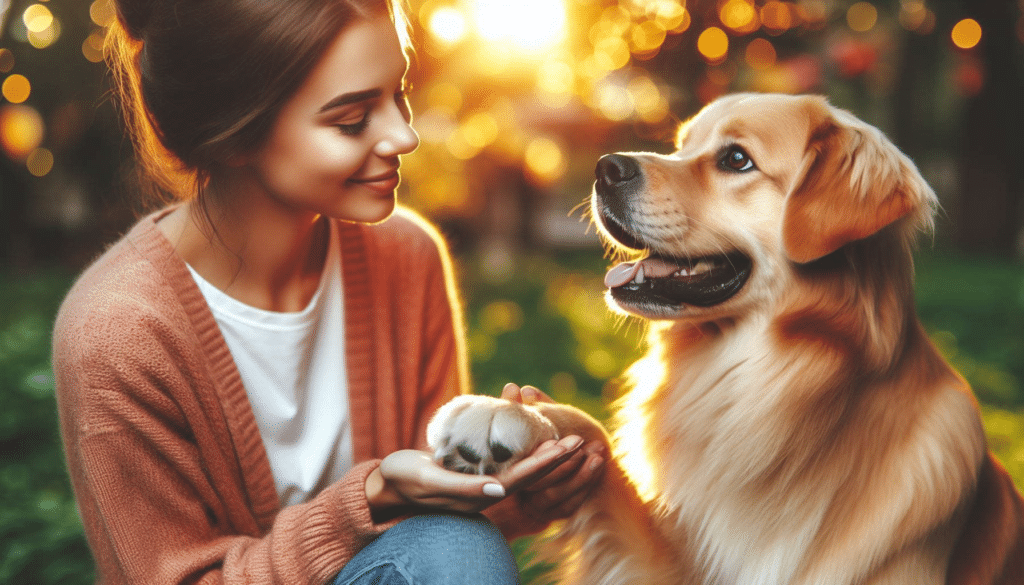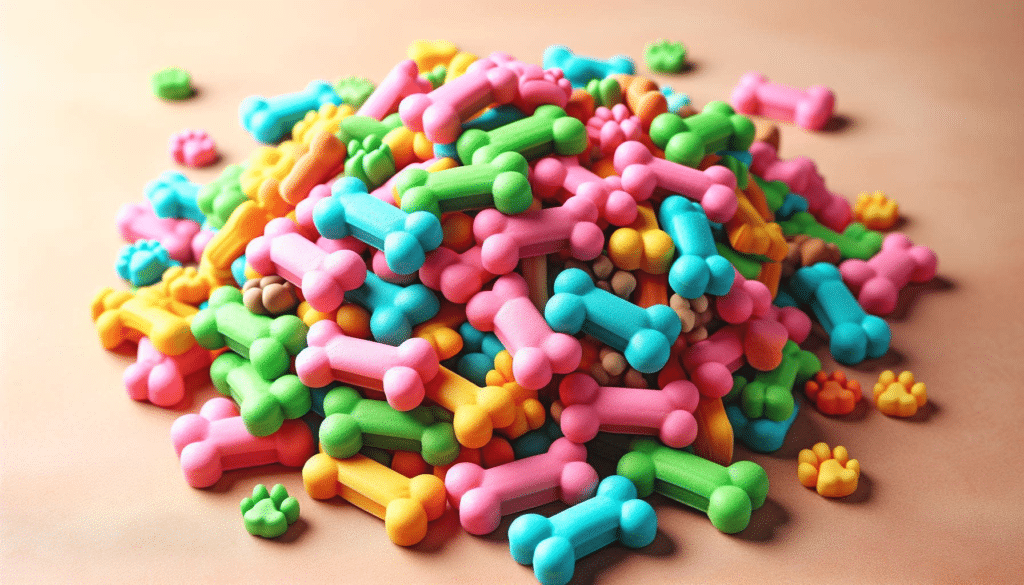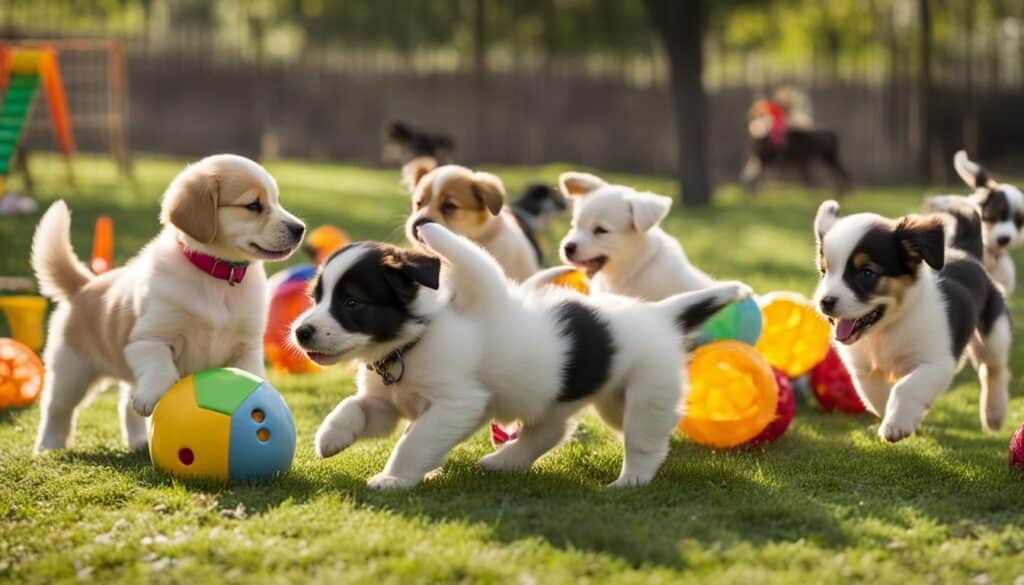Teaching your dog to shake paws is not just a fun trick but also strengthens the bond between you and your furry friend. This comprehensive guide will walk you through the step-by-step process of teaching your dog this classic trick. From understanding the benefits of training your dog to shake to overcoming challenges and advanced tips, this guide covers everything you need to know to master the art of teaching your dog to shake paws. Get ready to impress your friends and build a stronger relationship with your canine companion!

Key Takeaways:
- Teaching your dog to shake paws strengthens the bond between you and your dog.
- It’s essential to understand the benefits of teaching your dog this trick, such as improved communication and obedience.
- Preparation is vital, so ensure you have the right tools and create a positive learning environment.
- Follow the step-by-step guide to teach your dog to shake paws effectively.
- If you encounter challenges, adjust your technique and consider seeking professional guidance.
Why Start with Teaching Your Dog to Shake Paws?
Before diving into the training process, it’s essential to understand why teaching your dog to shake paws is a valuable skill. This section explores the various benefits of teaching your dog this trick, such as improving the bond between you and your dog, enhancing obedience and communication skills, and promoting positive reinforcement training methods. Additionally, it introduces the basics of dog training and behavior modification, emphasizing the importance of positive reinforcement and setting a foundation for successful training sessions.
The Benefits of Teaching Your Dog to Shake
Teaching your dog to shake can have numerous benefits for both you and your furry friend. Not only does it impress your friends and family, but it also strengthens the bond between you and your dog. You establish trust and build a deeper connection beyond this trick by engaging in positive training sessions.
Moreover, teaching your dog to shake helps enhance obedience and communication skills. Your dog learns to respond to commands and cues through consistent training sessions, improving their overall obedience. This skill also promotes effective communication between you and your dog as they learn to understand and interpret cues from your hand gestures and command words.
Furthermore, teaching your dog to shake reinforces positive reinforcement training methods. By rewarding your dog’s successful paw shakes with praise, treats, or a clicker, you motivate them to continue performing the desired behavior. This positive training approach nurtures a harmonious and cooperative relationship between you and your dog.

Building a Stronger Bond with Your Dog Through Training
Training your dog, including teaching them to shake paws, is an excellent way to strengthen the bond between you and your canine companion. Regular training sessions allow you to spend quality time together, create positive associations, and establish trust and cooperation.
Training sessions allow you to connect with your dog on a deeper level, understand their capabilities, and celebrate their achievements. The process of teaching your dog tricks like shaking paws fosters a sense of teamwork and mutual understanding, reinforcing the dog-human bond.
Additionally, training sessions offer mental stimulation for dogs, helping them stay mentally and physically active. You keep their minds engaged, prevent boredom, and encourage their natural instinct to learn and problem-solve by providing them with challenges. This mental stimulation strengthens the bond between you and your dog as you work together towards common goals.
Introduction to Dog Training and Behavior Modification
Before embarking on the journey of teaching your dog to shake paws, it’s essential to have a basic understanding of dog training and behavior modification principles. Dog training is learning dogs’ specific skills and behaviors, while behavior modification focuses on modifying unwanted behaviors positively and effectively.
Positive reinforcement is a crucial concept in both dog training and behavior modification. It involves rewarding desired behaviors with praise, treats, or other incentives while ignoring or redirecting unwanted behaviors. Positive reinforcement creates a positive association and motivates dogs to repeat the desired behavior.
By learning about dog training and behavior modification techniques, you equip yourself with the knowledge and tools to teach your dog to shake paws effectively. Understanding the underlying principles allows you to tailor your training approach to your dog’s unique needs and abilities, ensuring a successful and enjoyable learning experience for both of you.
Preparing to Teach Your Dog the Shake Hand Trick
To effectively teach your dog to shake paws, it is essential to be prepared with the right tools and knowledge. This section will guide you through the necessary items, understanding your dog’s learning style, and creating a positive learning environment.
Essential items you’ll need to teach your dog to shake
Before starting the training process, gather the essential items to facilitate successful teaching. Make sure to have high-value dog training treats on hand. These treats will serve as rewards to reinforce your dog’s desired behavior. Consider using a clicker, a helpful training tool that helps create a clear association between the desired action and the reward.
Understanding your dog’s learning style
Every dog has a unique learning style, and understanding this can significantly enhance the training experience. Some dogs are visual learners, responding well to cues and gestures, while others may be more auditory or kinesthetic learners. By observing your dog’s behavior and response during training, you can determine their learning style and adjust your teaching approach accordingly.

Creating a positive learning environment for your dog
A positive learning environment is crucial for practical training sessions. Create a safe and comfortable space where distractions are minimized, allowing your dog to focus on the training. Positive reinforcement is essential in this environment, as it promotes a positive association with the training process. Use encouraging words, praise, and rewards to motivate your dog and keep them engaged.
| Essential training items | Benefits |
| High-value dog training treats | Reinforce desired behavior |
| Clicker | Aids in clear communication and association |
Step-by-Step Guide to Teach Your Dog to Shake Paws
Teaching your dog to shake paws can be a rewarding and fun experience for you and your furry friend. This step-by-step guide will walk you through training your dog to shake paws, starting with the foundational skills of getting your dog to sit and focus on you.
Getting your dog to sit and focus on you
The first step in teaching your dog to shake paws is to ensure they can sit and focus on you. This foundational skill establishes a clear communication channel between you and your dog during training sessions. Use positive reinforcement techniques, such as offering treats and praise, to encourage your dog to sit and maintain eye contact with you.
Introducing the shake hand command
Once your dog is sitting and focused, it’s time to introduce the shake hand command. Hold your hand, palm facing up, and say “shake” or “paw.” Use a clear and consistent verbal command that your dog can easily understand. When your dog lifts their paw to touch your hand, reward them with a treat and praise.
Guiding your dog’s paw into your hand
As your dog becomes familiar with the shake hand command, you can start guiding their paw into your hand. Gently support their paw with your hand and provide gentle pressure to encourage them to place it in your hand. Reward them immediately with treats and praise when they complete the paw shake.
Rewarding your dog for successful paw shakes
Consistently rewarding your dog for successful paw shakes reinforces the desired behavior. Each time your dog lifts their paw and makes contact with your hand, reward them with treats and praise. Gradually reduce the number of treats given over time, but continue to offer verbal praise and other forms of positive reinforcement.
Training your dog to shake paws may require patience and practice, but you can successfully teach this delightful trick with consistent effort. Remember to keep training sessions short and positive, and always end on a positive note. By using reward-based training methods and following this step-by-step guide, you’ll be well on your way to mastering the art of teaching your dog to shake paws.
| Step | Action |
| 1 | Get your dog to sit and focus on you |
| 2 | Introduce the shake hand command |
| 3 | Guide your dog’s paw into your hand |
| 4 | Reward your dog for successful paw shakes |
Overcoming Challenges When Teaching Your Dog to Shake
While teaching your dog to shake paws is generally straightforward, there may be challenges along the way. This section addresses common difficulties and provides helpful strategies for overcoming them.
What to do if your dog struggles to understand the shake command
If your dog is having difficulty understanding the shake command, don’t worry. It’s important to remember that all dogs learn at their own pace. Here are some troubleshooting tips:
- Break down the command: Instead of teaching the entire shake command at once, break it down into smaller steps. Start by teaching your dog to lift their paw and gradually work towards shaking hands.
- Use visual cues: Dogs are highly visual learners. Use hand signals or gestures with verbal commands to help your dog understand what you want them to do.
- Patience and consistency: Practice the shake command regularly and be patient with your dog. Consistency is vital in reinforcing the desired behavior.
Adjusting your technique based on your dog’s reaction
Every dog is unique, and what works for one dog may not work for another. It’s essential to pay attention to your dog’s reactions and adjust your training technique accordingly. Here are some tips:
- Positive reinforcement: Use rewards such as treats, praise, and petting to motivate and encourage your dog during training sessions. Find out what motivates your dog the most and use it as a reward.
- Try different techniques: If your dog isn’t responding to a particular training method, try a different approach. Dogs have different learning styles, so try incorporating visual or tactile cues to help them understand the command.
- Keep training sessions short and fun: Dogs have limited attention spans, so keep them short, around 5-10 minutes, and make them enjoyable. End each session positively, even if your dog is still in the early stages of learning the shake command.
Consulting a professional dog trainer for additional guidance
If you’re facing significant challenges or struggling to teach your dog to shake paws, seeking professional guidance is always a good idea. An experienced dog trainer can provide personalized advice, help troubleshoot specific issues, and offer professional guidance tailored to your dog’s unique needs.
Remember, professional trainers have the knowledge and experience to assist you in overcoming any training challenges you may encounter. They can provide invaluable insights and techniques to ensure successful training outcomes.
With patience, consistency, and professional guidance, you can overcome any challenges and successfully teach your dog to shake paws.
Advanced Tips for Perfecting the Shake Paw Trick
Once your dog has mastered the fundamental shake paw trick, it’s time to advance their training and take the trick to the next level. These advanced tips will help you perfect the shake paw trick and strengthen your dog’s training skills.
Transitioning from a visible treat to a verbal command
One of the critical milestones in training your dog to shake paws is transitioning from a visible treat to a verbal command. This allows your dog to respond to the shake command without the presence of a treat as a visual cue. To achieve this, gradually reduce the reliance on treats while increasing the emphasis on verbal command. Start by using both the hand gesture and the verbal command simultaneously, and then gradually phase out the hand gesture until your dog responds solely to the verbal cue.
Incorporating the shake paw trick into other dog training routines
Incorporate the shake paw trick into other dog training routines to challenge and engage your dog further. This expands your dog’s repertoire of tricks and helps solidify their understanding of the command. For example, you can incorporate the shake paw trick into a sequence of multiple tricks or combine it with other obedience commands, such as sit or stay. Integrating the shake paw trick into different training routines will enhance your dog’s overall training abilities and reinforce their responsiveness to commands.
Teaching your dog to shake with both paws
Take the shake paw trick to a new level by teaching your dog to shake with both paws. This advanced variation adds variety and challenge to the trick, further stimulating your dog’s cognitive abilities. Start by reinforcing the shake paw command with one paw, and once your dog has mastered it, introduce the command for the other paw. This will impress others with your dog’s ability to alternate paws, provide mental stimulation, and keep their training sessions exciting.
Maintaining Interest and Preventing Boredom in Dog Training
Ensuring your dog remains engaged and enthusiastic throughout training is critical to their continued progress. It’s important to vary the training sessions to prevent boredom and maintain interest. One effective strategy is to change the training environment occasionally. Consider taking your dog to different locations, such as a park or a friend’s backyard, to provide new sensory stimuli and focus their attention.
In addition to changing the training environment, introducing new tricks and challenges is another way to keep your dog engaged. Once your dog has mastered the shake paw trick, explore other fun and useful tricks, such as rolling over or playing dead. This variety adds mental stimulation and expands your dog’s repertoire of tricks, making training sessions more exciting for both of you.
Recognizing and rewarding your dog’s progress is crucial for maintaining their motivation. Positive reinforcement plays a significant role in dog training, so praise and reward your dog for each successful attempt at the shake paw trick. Additionally, celebrate milestones along the way, such as when your dog starts offering their paw without prompting or when they consistently performs the trick in different environments. This positive feedback will keep your dog interested and reinforce their learning and bond with you.
FAQs
Q: How do I start to teach a dog to shake a paw?
A: To start teaching your dog to shake a paw, begin by getting your dog to sit comfortably in front of you. This will set a calm and focused environment, making it easier for your dog to pay attention and learn the trick.
Q: How can I ask my dog to shake a paw without confusing them?
A: To avoid confusion when teaching your dog to shake, clearly and consistently use the command “shake” every time you practice the trick. Consistency in verbal cues and actions helps your dog understand the expected behavior.
Q: How often should I practice teaching a dog to shake hands?
A: Dog owners should practice teaching their dogs to shake hands in short, positive sessions a few times daily. Each session can be about 5-10 minutes long to keep it fun and prevent your dog from getting bored or frustrated.
Q: What if my dog doesn’t lift his paw high enough to shake my hand?
A: If your dog doesn’t lift his paw high enough, you can gently help by lifting his paw with your hand. Over time, with patience and consistency, encourage your dog to lift his paw higher until he does so on his own.
Q: Why is it essential for dog owners to teach tricks like “shake a paw”?
A: Teaching tricks like “shake a paw” is essential for dog owners because it strengthens the bond between the owner and the dog, provides mental stimulation, and can be a fun way to impress family and friends. Additionally, it establishes a foundation for learning more complex behaviors or dog sports.
Q: Can all dogs learn to shake hands, or are some breeds better than others?
A: Almost all dogs can learn to shake hands, regardless of breed. Trick training, like shaking hands, is more about patience, consistency, and the training approach than the dog’s breed. Some dogs may learn quicker than others, but with positive reinforcement, nearly every dog can master shaking hands.
Q: How do I know when my dog is ready to move on from learning to shake?
A: Your dog is ready to move on from learning to shake when he consistently performs the trick each time you ask, without hesitation and without needing a treat as an incentive every time. You can then introduce new tricks or commands to keep your dog’s training engaging and challenging.

